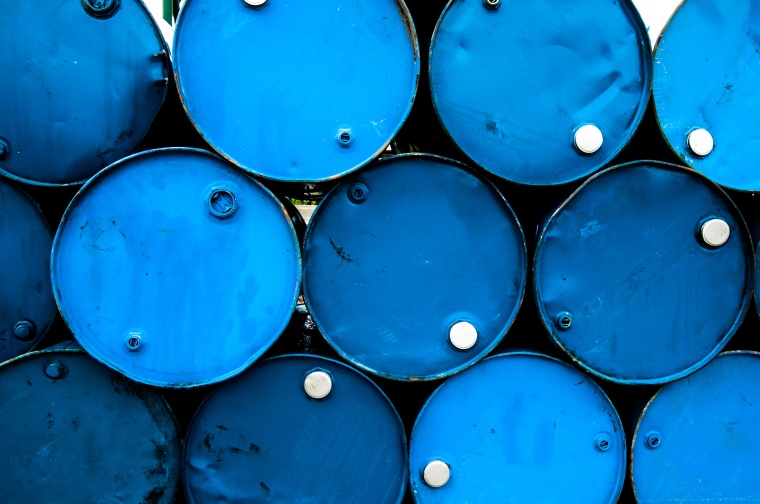Mammoth US Find Excites Fracking Industry

A find in western Texas of what is being billed as the largest-ever shale oil and gas reserves at a single site – possibly worth as much as $900 billion in revenue – is exciting the fracking industry. Some US government officials are even claiming that this may be the world’s second largest continuous field, behind Saudi Arabia’s giant Ghawar oilfield.
The reserves of around 20 billion barrels of oil, trapped 10,000 feet (more than 3,000 meters) below layers of shale in the Midland basin that stretches into the state of New Mexico, were uncovered by the US Geological Survey (USGS) as part of a nationwide project assessing domestic petroleum basins with an eye to increasing energy security.
USGS said it believes the site, Wolfcamp Shale, also may contain about 16,000 cubic feet of natural gas and 1.6 billion barrels of natural gas liquids. Underscoring the importance of the find, the geologists noted that it is three times larger than the Bakken oilfields found in the state of North Dakota in 2013. The potential also dwarfs the 40 billion barrels of oil the UK has pumped from the North Sea since the 1970s, reports said.
“The fact that this is the largest assessment of continuous oil we have ever done just goes to show that, even in areas that have produced billions of barrels of oil, there is still the potential to find billions more,” said Walter Guidroz, a program coordinator for the USGS Energy Resources Program.
"Changes in technology and industry practices can have significant effects on what resources are technically recoverable, and that's why we continue to perform resource assessments throughout the United States and the world,” Guidroz added.
The US has produced more – conventional and unconventional – oil and natural gas than any other country every year since 2012, according to the US Energy Information Administration (EIA.) Whether or not drilling in the Wolfcamp Shale would be profitable, however, has not been evaluated. Some experts believe $900 billion is simply a wild guess that will have to stand up to the test of extraction costs and pricing.
Drilling company Pioneer Natural Resources, which has rights to exploit 785,000 acres (312,000 hectares) in the Wolfcamp area, has said it now plans to end its vertical drilling operation there and concentrate on horizontal drilling in the shale fields. Oil majors such as ConocoPhillips have also reportedly shown interest in fracking at Wolfcamp.
The oil and gas news is boosting sagging spirits in the fracking industry, where activity has been depressed due to falling prices along the value chain. By contrast, environment advocates who were hoping that shale gas exploitation would remain financially infeasible for some time to come have seen their hopes dashed.
Under the Paris climate agreement, which went into effect in early November, the US has pledged to cut greenhouse gas emissions 26-28% by 2025 but this looks to be in danger with the election of Donald Trump, a fracking supporter who has declared global warming to be a hoax. Trump has suggested he may dismantle President Barack Obama’s climate protection rules and possibly even strike the US signature from the Paris accord.
The US Environmental Protection Agency (EPA) has been studying the effects of fracking on drinking water for about two years without publishing any conclusions. In a news conference on Nov. 21, EPA director Gina McCarthy – who will leave office with current President Barack Obama – said the study is ongoing. The agency has been under industry pressure to soft-pedal risks.
Even more alarming for anti-fracking groups is that Trump is widely expected to nominate 70-year-old fracking billionaire Harold Hamm of Oklahoma for the job of Secretary of Energy in his cabinet. It would be the first time someone directly from the oil industry has been appointed to the position since it was created in 1977.
Speaking to the national convention of the Republican Party this past July, Hamm called for expanded drilling to reduce dependence on Middle East imports. A Trump administration is also seen as likely to open up more federal lands to oil development, while fighting plans by states such as New York to ban fracking.
Meanwhile, Saudi Arabia has cautioned the president-elect against carrying out a threat made during the campaign to stop oil purchases from the Middle East country if the kingdom and other Arab countries do not commit ground troops to fight the terror group ISIS or at least reimburse the US for its expenditure. Economists have said such a move could backfire.
According to the EIA, the US imported 3.4 million barrels/d of oil from OPEC in August, with nearly a third coming from Saudi Arabia. The kingdom was the second largest exporter of oil to the US that month, behind Canada. Due to the fracking boom, however, this was down substantially from 2014 imports, the agency said.
















